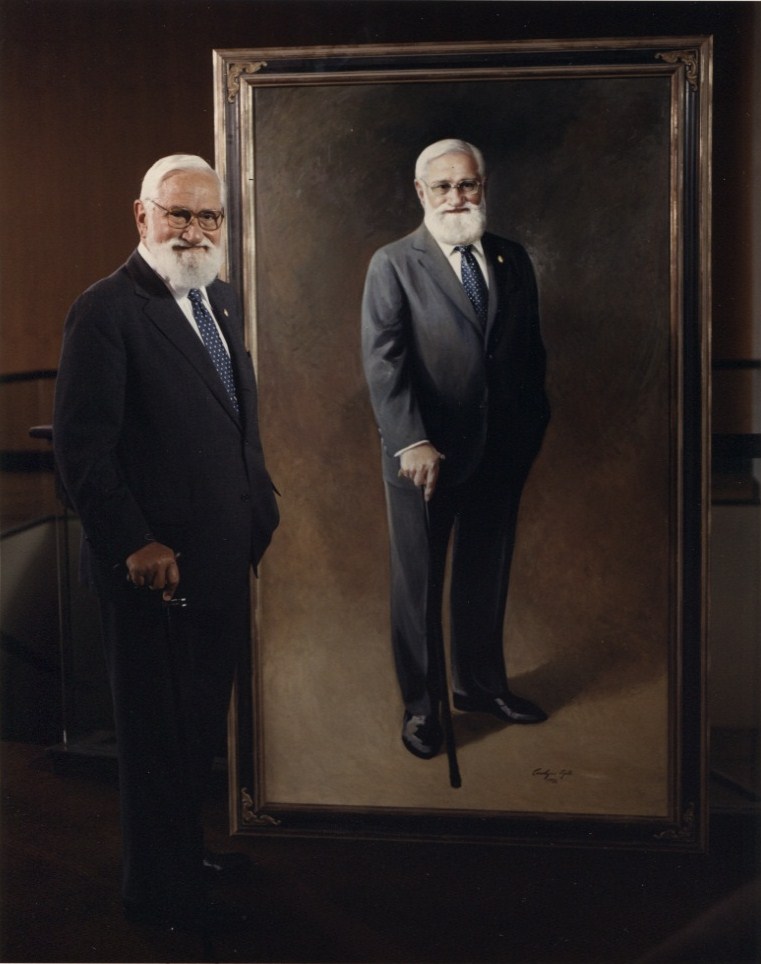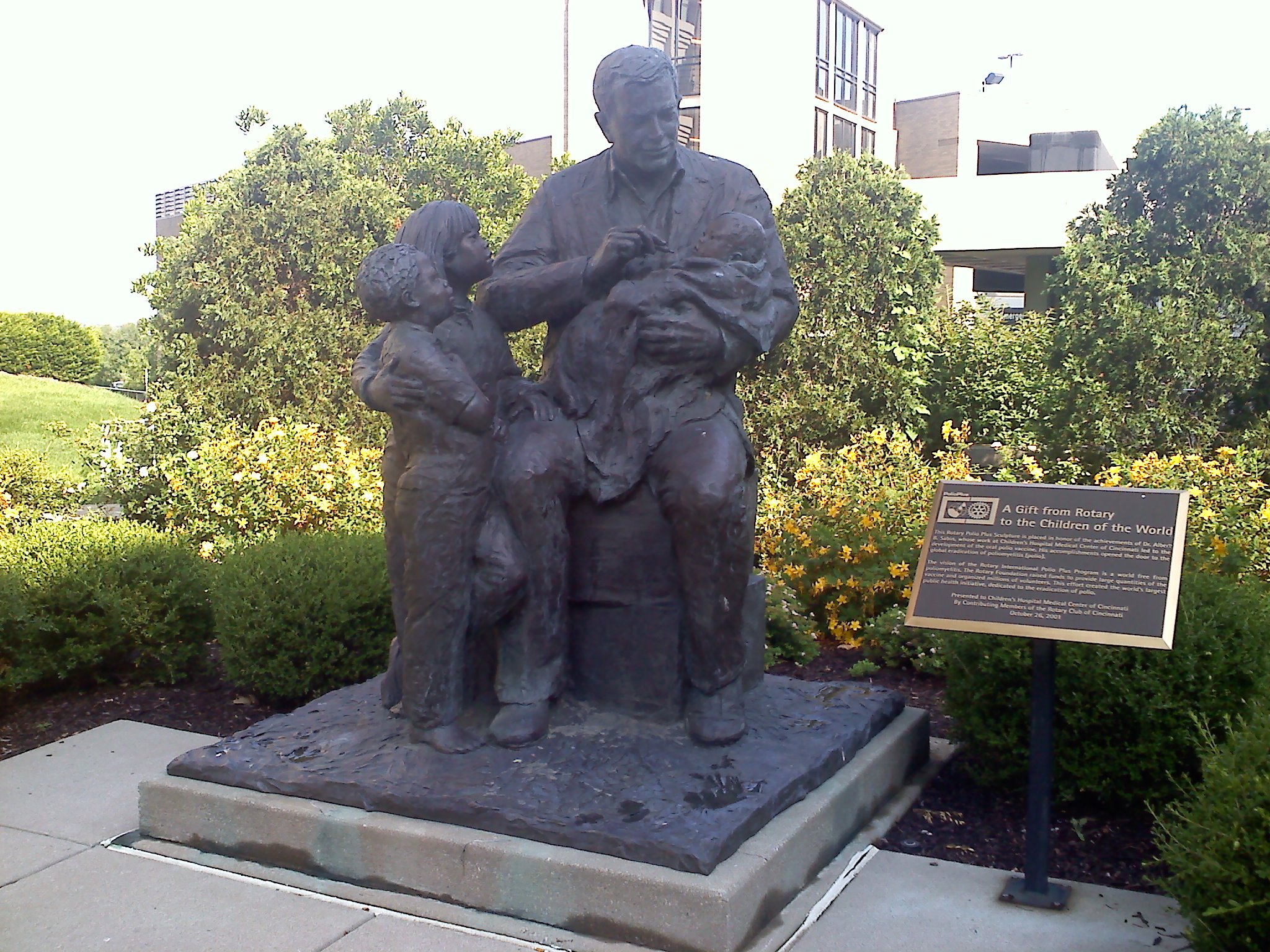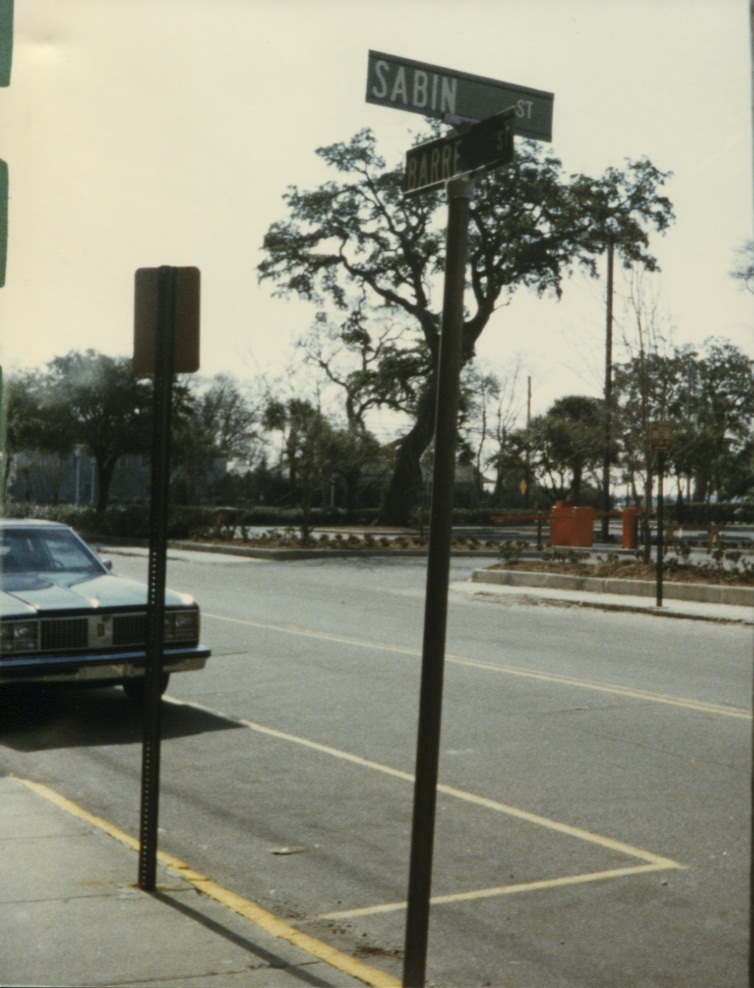A post from a couple weeks ago where I mention the renaming of the road outside of our building to Albert Sabin Way made me think of other places that have Dr. Sabin’s name. I thought I would briefly touch on some of the places that are named after him.
One very close to where the Winkler Center is located is the Albert B. Sabin Education and Conference Center, which is located on the Cincinnati Children’s Hospital Medical Center’s Main Campus. In 1999, the medical center announced the naming of the building after Dr. Sabin. The building opened in 2000 as part of a large renovation program for the campus. According to the hospital’s website, this Center contains meeting space, the hospital’s libraries, a cafeteria, and many hospital services. At the time of the announcement of the naming, a press release stated, “In naming our center for Dr. Sabin, we hope to inspire all of those we teach to follow his example.”

Dr. Sabin with his portrait that currently is in the Albert B. Sabin Education and Conference Center
Since this Center is so close by, I decided to take a walk to check it out. Outside of the building is a statute that was donated by Rotary International in 2001, in honor of Dr. Sabin. (I took a picture of it with my camera phone for you to see. I apologize for the quality of the photo!) Inside the building there is an exhibit dedicated to Dr. Sabin, as well as a portrait of his hanging on the wall. (I found a better photograph of the painting to show you, instead of another shot from the camera phone.) It’s nice to know that Dr. Sabin’s legacy is being honored so close to me, so I can walk over any time I want!
Also named after Dr. Sabin, but not quite as close as Cincinnati Children’s, is the Sabin Vaccine Institute in Washington, DC. This non-profit organization was established in 1993, shortly after Dr. Sabin’s death. According to their website, the mission of the SVI is “[to] reduce needless human suffering from vaccine preventable and neglected tropical diseases through innovative vaccine research and development; and to advocate for improved access to vaccines and essential medicines for citizens around the globe.” This mission statement seems very appropriate to me, especially from what I have learned so far about Dr. Sabin and his beliefs. To learn more about the Sabin Vaccine Institute, check out their informative blog (which happens to feature some of my work, as well!)
There are other notable things named after Dr. Sabin. The Sabin Vaccine Institute also has the “Albert B. Sabin Gold Medal Award” that it awards to someone in the research community who has contributed significantly to the field of vaccinology. The downtown convention center here in Cincinnati was the Albert B. Sabin Convention Center from 1986 to 1999. Schools, streets and parks are all named after the good doctor.
Finally, in our collection, I found this photo of a street sign labeled “Sabin St.” The photo doesn’t have a date or location, so I don’t know if it was truly named after Dr. Sabin. Even so, I thought it was pretty neat. If you know where this street is or know of other places or things named about Dr. Sabin, please let me know. Better yet, take a photo and send it my way (stephanie.bricking@uc.edu). It might end up on one of my blog posts!
In 2010, the University of Cincinnati Libraries received a $314,258 grant from the National Endowment for the Humanities (NEH) to digitize the correspondence and photographs of Dr. Albert B. Sabin. This digitization project has been designated a NEH “We the People” project, an initiative to encourage and strengthen the teaching, study, and understanding of American history and culture through the support of projects that explore significant events and themes in our nation’s history and culture and that advance knowledge of the principles that define America. Any views, findings, conclusions, or recommendations expressed in this blog do not necessarily reflect those of the National Endowment for the Humanities.


